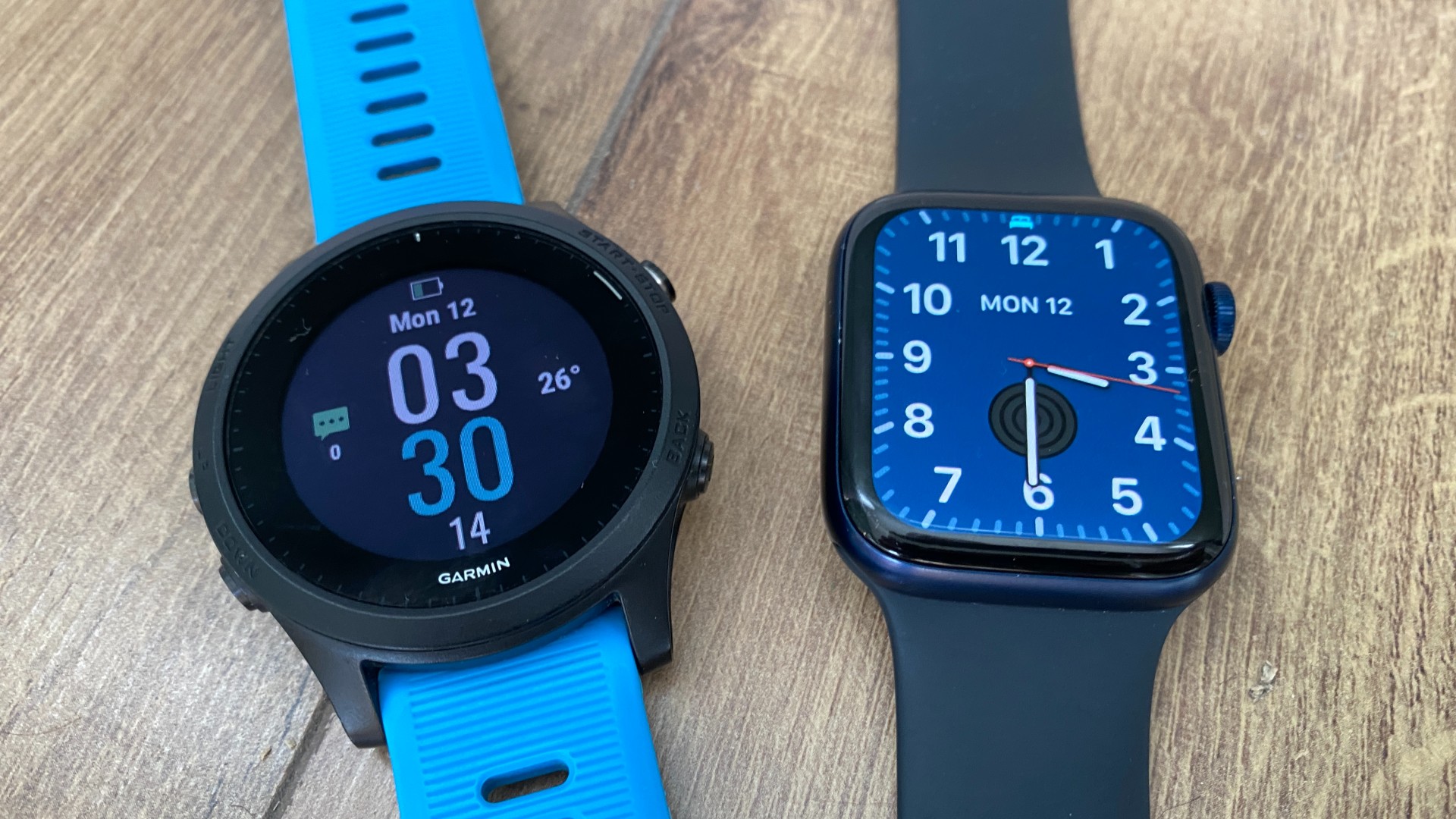Are Apple And Garmin Heart Rate Monitors Accurate? This Study Says Yes
A new study found that the Apple Watch Series 6 and Garmin Forerunner 945 produced similar heart rate readings to an ECG

Even with the best fitness trackers and running watches, inaccurate heart rate readings are a common complaint. The optical heart rate sensors they use can struggle during intense exercise sessions, and in general we recommend using a chest strap heart rate monitor for the best results—here's our guide to the best heart rate monitors.
However, a new study in the journal Digital Health has found that the heart rate monitors on the Apple Watch Series 6 and Garmin Forerunner 945 are more accurate than you might think. Compared with the readings of an electrocardiogram measurement, the mean percentage error of the devices was remarkably low: less than 1% for Apple and 1.16-1.39% for Garmin.
Crucially, this means that both watches could reliably determine what heart rate zone you are working in during exercise. Even if the exact heart rate is a couple of beats out you can use them to check whether you are working out at a moderate or vigorous intensity, which is a great way to ensure your workout isn’t too easy or hard for what you’re trying to achieve.
Thirty people participated in the study: 15 men and 15 women aged between 20 and 40, all described as “healthy” and able to undertake vigorous exercise. The ethnicity of the subjects is not mentioned, which could be problematic because past research has found optical heart rate monitors to be less accurate for those with darker skin.
To test heart rate accuracy at different intensities, the participants undertook a cycling ramp test in which the intensity increased each minute until they were unable to continue.
The Apple Watch has been one of the more accurate devices for heart rate we’ve tested in recent years, with the more recent Series 7 proving just as impressive as the Series 6 in our experience. Even so, it is surprising to see both the Apple Watch and Garmin Forerunner 945 perform so well.
In our watch tests we often find that optical heart rate monitors perform better during steady efforts or workouts where you progressively work harder, such as the ramp test in the study. Where they often go wrong is during HIIT workouts, such as interval runs, where optical sensors lag behind chest strap readings as your heart rate spikes and falls for the intervals.
Get the Coach Newsletter
Sign up for workout ideas, training advice, reviews of the latest gear and more.
Using an optical heart rate monitor built into your watch is much more convenient than using a chest strap, though, so we’re ever hopeful that the accuracy of the sensors will continue to improve.

Nick Harris-Fry is a journalist who has been covering health and fitness since 2015. Nick is an avid runner, covering 70-110km a week, which gives him ample opportunity to test a wide range of running shoes and running gear. He is also the chief tester for fitness trackers and running watches, treadmills and exercise bikes, and workout headphones.
